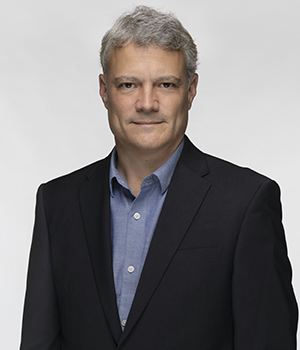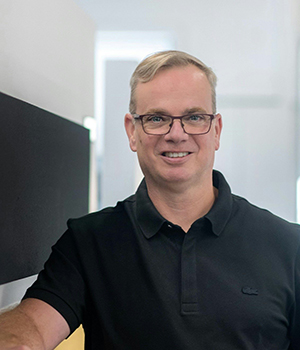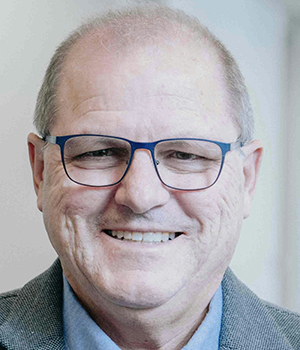Back to program
Mining Projects – Best Practices in Risk Management
Wednesday, November 20, 2024
Room 401 - Hydro-Québec
Mine development involves managing a growing number of risks associated with the exploitation of mineral potential. Nowadays, it is essential to build a relationship of trust with local and indigenous communities from the earliest stages of exploration. The resource must be found, defined and evaluated, in terms of both quantity and quality. The project must be financed at every stage of its development, and some stages, such as basic exploration or development, are more difficult. Then, before a decision is made to begin mining, resource extraction and land reclamation must be planned. For many critical and strategic minerals, processes must also be developed to concentrate the ore and then transform it. Finally, a treatment plan for liquid effluents and solid tailings must also be designed to minimize the environmental impact on receiving environments. Given the increasing complexity of the task we face in developing a project, how can we manage to take into account all the risks involved, and what are the best practices for doing so?
This session will be offered in French and in English.
9:00 a.m.
Welcome Address
9:25 a.m.
Mining projects - Financial risks and financing of projects
9:40 a.m.
Mineral Resources at the heart of mining projects: Risks and uncertainties associated with their estimation, classification and reporting
Conference details
Mineral resource estimates are the foundation of any mining project. These estimates form the basis for technical, economic and environmental studies, and are used to develop various scenarios of potential economic viability. Estimating mineral resources involves several challenges and uncertainties. This presentation will address the main aspects of risk and uncertainty associated with their estimation, classification and declaration.
The sufficiency, completeness, quality and representativeness of the data collected are crucial elements in developing mineral resource estimation scenarios. Exploration data, its types and the acquisition campaigns (recent versus historical periods) will have to be questioned, validated (including QA/QC quality control processes), retained, eliminated or weighted in the estimation process.
The interpretation, creation of a geological model, development of a 3D litho-structural model and separation into different domains of mineralisation will have to honour the factual data. It will also be necessary to consider the limitations of the geological model in terms of its predictability, and whether there is uncertainty about certain domain boundaries.
The data processing process (e.g. capping, compositing), the estimation and interpolation parameters and conditions, and the interpolation method (e.g. kriging) will also involve their own share of challenges and trade-offs between smoothing the data and retaining certain anomalous levels. Visual and statistical validation will be used to assess their impact. Finally, the results of the estimates can be expressed in terms of confidence levels and can evolve from inferred, indicated and possibly measured mineral resource levels. The results will also have to respect the conditions of reasonable prospects for eventual economic extraction (RPEEE).
Mineral resource estimates are snapshots in time, essentially reflecting the state of knowledge and the quantity and distribution of data available at a given point in time.
10:00 a.m.
Metallurgical process development—tips for dealing with risks
Conference details
Metallurgical testing plays a critical role in the evaluation and development of a mining project. It is therefore important to carefully select the tests to be completed at the right stages. Here, we will discuss the key elements to include in a testing program for the development of critical and strategic mineral projects.
10:20 a.m.
Never too early to positively influence the destiny of your project
Conference details
The opportunity to reduce environmental risks and positively influence mining projects arises long before the detailed technical feasibility analysis. The various phases of the mining project development cycle provide an opportunity to update risk assessment and pursue environmental and social optimization of projects, thereby limiting the impact on the receiving environment. The presentation offers some food for thought on this subject, as well as best practices in environmental risk management for mining projects.
10:40 a.m.
Social acceptability: changing a risk into opportunities
Conference details
Social acceptability represents a significant risk for any industrial project, and in particular for mining projects. It is based on a combination of actions that aim to address the concerns of local stakeholders and demonstrate that the project will have positive implications. The main key points to achieve this acceptability are early and continuous consultation, consideration of concerns, transparency and proactive and continuous communication. The case of the Nemaska Lithium conversion plant in Bécancour had all the characteristics to arouse social rejection: a controversial old project with significant environmental impacts resulting from a heavy industry with intensive transport. Added to this is the pressure of a coalition of several environmental groups in the face of the deployment of the battery sector in Quebec. We will go around all the decisions and actions that have allowed Nemaska Lithium to obtain an enviable level of acceptability for its project in Bécancour and to transform a risk into opportunities for the community and the industry.
11:00 a.m.
Nickel market evolution and processing methods to support the battery sector: Example of a carbon-neutral nickel sulfate production process.
Conference details
In recent years, the nickel market has undergone significant transformations in response to the increasing fight against climate change. The rise in demand for electric vehicles (EVs) and the shift towards more environmentally friendly mining practices have been the most notable developments. Lithium-ion batteries for EVs require a substantial amount of nickel and high-quality materials to ensure the compliance of the final product. These stringent requirements have led to changes in extraction and manufacturing processes for battery materials. The growing need for “green” nickel has had a considerable impact on global demand, influencing investment and production strategies in the mining industry. R&D efforts are essential to address these challenges and support nickel value chains by developing efficient processes based on circular economy principles, such as reagent recycling and waste valorization.
On average, it takes more than 15 years to explore a mineral resource, develop a project, complete construction, and start production. To reduce this waiting period, the processing of mine tailings or industrial waste presents an eco-friendly alternative to rapidly produce nickel without the need for exploration and mine construction. For example, over 800 million tonnes of asbestos tailings containing approximately 0.2% nickel are available in Quebec. These tailings could serve as a source of nickel for Quebec’s supply chain. The company Exterra Carbon Solutions (Exterra) is developing a carbon-neutral and eco-friendly nickel sulfate production process from these tailings, in collaboration with SGS Canada and around ten partners.
The first part of this presentation will address the evolution of global nickel demand and the opportunities it presents for Quebec, as well as the environmental challenges of mining projects. Examples of industrial processes for extracting and producing advanced nickel materials will be reviewed to identify research needs based on the demands of end-users in the battery sector. In the second part, Exterra’s carbon-neutral nickel production process will be presented, highlighting the company’s sustainable and environmentally friendly practices, which can create new economic opportunities in Quebec through strategic partnerships and R&D.
11:20 a.m.
End of the session









